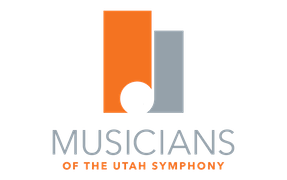Germany
Europe has a lot more cafés, cobblestones and graffiti than the U.S., but one thing that can be hard to find is a restroom. In the Brussels train station there must be about 25 track lines, but a men’s room? Only one! And trying to find it was a challenge while waiting for our train to Bonn. The answer? Hop on another train and hope it has a restroom and it doesn’t leave too soon. Such was the scenario on the way to German soil. Fortunately, I successfully completed my mission. Otherwise I’d be writing this blog entry from Paris and as beautiful as Paris is in the springtime, we have non-refundable tickets for hotels and concerts and Lisa probably wasn’t interested in going alone!
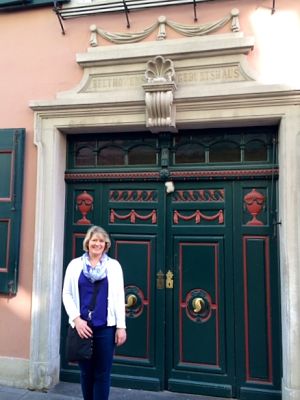
Beethoven’s birth house
Bonn, Germany is, of course, the birthplace of Beethoven. It’s a beautiful old and new city. Substantial car-free zones dominate areas close to Beethoven’s house. Many people enjoy walking along the shops and restaurants and along the Rhine River. We did too. The Beethoven museum was really special and Lisa and I enjoyed the listening library where everything he was known to compose has been recorded. I listened to his two trios for two oboes and English Horn. On the recording was Heinz Holliger, perhaps the most famous oboe player of the 20th century. If I’m lucky, we may get to meet him in Basel, Switzerland next month. Thierry Fischer has introduced me to his secretary. In this business, sometimes it helps to know the right people! Bonn is also a college town and students were out in force during our visit. A huge lawn several football fields long was the the site of young people playing frisbee, soccer, lacrosse, etc. Several were trying their luck on a tightrope that had been strung up between two trees. It was nice to be enjoying 70F weather and the students must have thought the same thing. The monument of Beethoven and the church where he spent his early years is close by and in excellent condition.

Bob and Beethoven
Eisenach was the next stop on our “musical journey” and Lisa would later say that it also seemed like a pilgrimage. We spent long hours in the Bach home and museum. One of the staff members gave a terrific demonstration on the five keyboard instruments that Bach would have used during his lifetime. One was a pump organ that required a teenage assistant. We loved the sound of the harpsichord and clavichord. It was also nice to read that one of Bach’s favorite instruments was the oboe. The Bach family lasted for generations as a musical influence. Their large three-story house was active with the collecting of instruments, the writing out of instrumental parts for any number of religious musical offerings, private lessons, practicing, etc. J. S. Bach was also a father twenty times, so all those kids must have been a challenge.
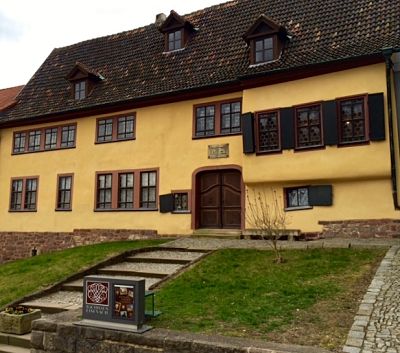
Bach’s birth house
Dresden has to win the award for the “Most Improved” city in Germany. The Allied bombing in February of 1945 destroyed almost everything, but the rebuilding gives credence to the city’s nickname, “The Florence on the Elbe”. Statues of composers like Karl Maria von Weber, Felix Mendelssohn and Richard Strauss were easy to notice and the most amazing mural adorns the side of the old palace, home to kings for centuries. We heard the Dresden Philharmonic play a very dark Prokofiev Symphony #3 and Stravinsky’s “Firebird”. The principal harpist, Xavier de Maistre, who went to school at Julliard also played the Gliere Harp Concerto. We went to see “Tosca” on our second night in Dresden. The tenor, Andeka Gorrotxategi, was fabulous and the solo clarinet and cello near the end of the opera equally good. Unfortunately, the musicians names were left out of the program.
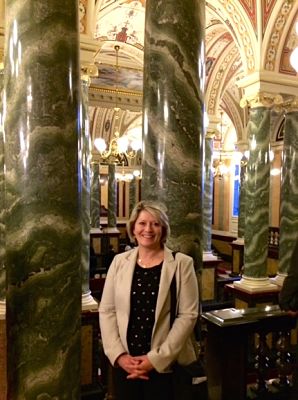
Inside Dresden Semperoper
In Dresden, and later in Leipzig, we would witness marches or speeches condemning the neo-Nazi groups in Germany. The country is very sensitive to allowing that to happen again!
Leipzig is another beautiful German city. We had a great flat for three days not far from the St. Thomas Church where J. S. Bach spent much of his adult life. We visited the church and museum and took a great self-guided walking tour to see Mendelssohn’s house and museum, the Schumann house and other sites related to Grieg, Wagner and Mahler. We tried to get tickets for a Lang Lang piano recital, but tickets prices were about $120 a piece. We declined. However, we did hear the Gewandhaus Orchestra conducted by Herbert Blomstedt. They performed Mendelssohn’s “Italian” Symphony and Schumann’s 3rd Symphony. Blomstedt is 87 years old, tall, lean and with big hands. He doesn’t use a baton. He has a full head of silver hair, bushy eyebrows, wire-rimmed glasses and he likes to wear his pants high. He still loves the music and the players responded to his energy. Sadly, the players names were not mentioned in the program. The music-making was exceptional and the collaborative effort extremely apparent. It was fun to be a part of this sold-out concert.
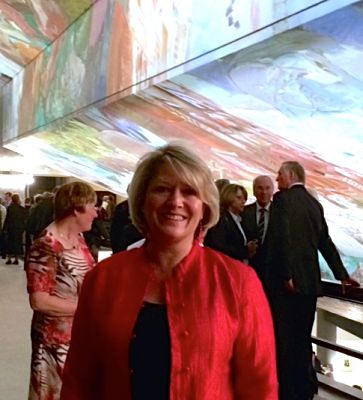
Evening at the Gewandhaus
We went to a great instrument museum in Leipzig. It contained some wonderful old instruments, including the first fortepiano built in 1726. The audio guide let us hear these instruments being played. You could hear the change from the harpsichord to this new piano. The evolution of the oboe was fascinating to me too. Little by little more and more keys found their way onto the oboe, but I still wonder…..has it made it any easier? I might get my answer when we go to Basel. I’m meeting up with a baroque oboe maker and trying out new baroque oboes. That’s my idea of fun!
The next morning we went to a children’s concert billed as “Peter and the Wolf”. A woodwind quintet from the Gewandhaus Orchestra supplied the reduced version. Even with German narration it was entertaining.
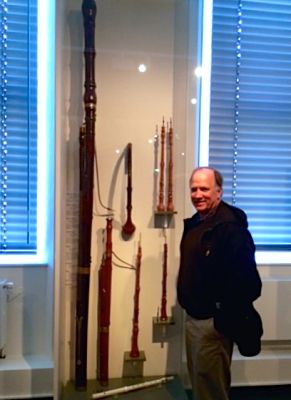
Musical Instrument Museum, Leipzig
Berlin is a much different city than 25 years ago. We’re staying at a nice hotel not far from the Tiergarten and the Philharmonie. We’d take advantage of both before the weekend was through.
Ricardo Muti conducted the Berlin Philharmonic on our first night in town and our seats were in the front row! I sat about ten feet from the spectacular first stand of basses and the fourth stand of violas. They were probably the norm! Lisa and I knew Muti’s conducting while he was music director of the Philadelphia Orchestra, so this was fun for us. The program included Schubert’s “Italian” Overture, Mozart’s Symphony No. 35 and “Aus Italien” by Richard Strauss. The orchestra was excellent in every way! A young woman was playing 1st oboe and sounded superb. Her name was not mentioned in the program. I’m going to try and find out her identity.
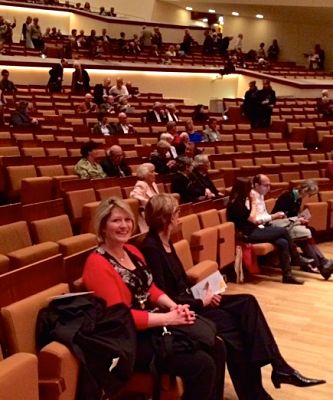
Front Row at the Berlin Philharmonic
We heard the German Symphony Orchestra of Berlin conducted by Kent Nagano. The main piece was Stravinsky’s Symphony of Psalms. The horn playing of Paolo Mendes was a stand-out.
On our last day (for now) in Berlin we went to the greatest of instrument museums and two recitals. The first was a group from Italy called “La Morra”. This three-person ensemble played Italian music from the 15th and 16th centuries. One woman played two recorders (not at the same time!) and clavichord. Another woman played the viola d’arco and had the most beautiful singing voice. They were most accomplished. We also heard a group called Concerto Melante performing on historical instruments. The music came from the 1700s and included a piece Wolfgang A. Mozart would have composed as a young boy. The musicians were outstanding. It was something special to hear a flute and an oboe from that time period. Their sounds were unique. We’re both wondering….. Shall we get one of each?
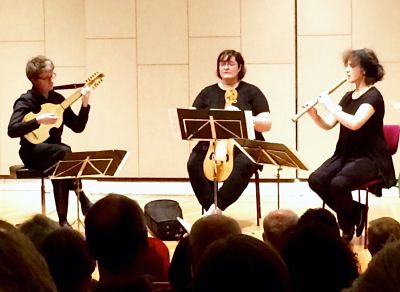
La Morra
Next stop? Munich.
– Robert Stephenson and Lisa Byrnes
